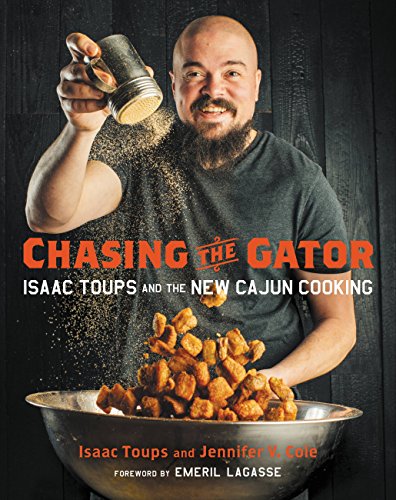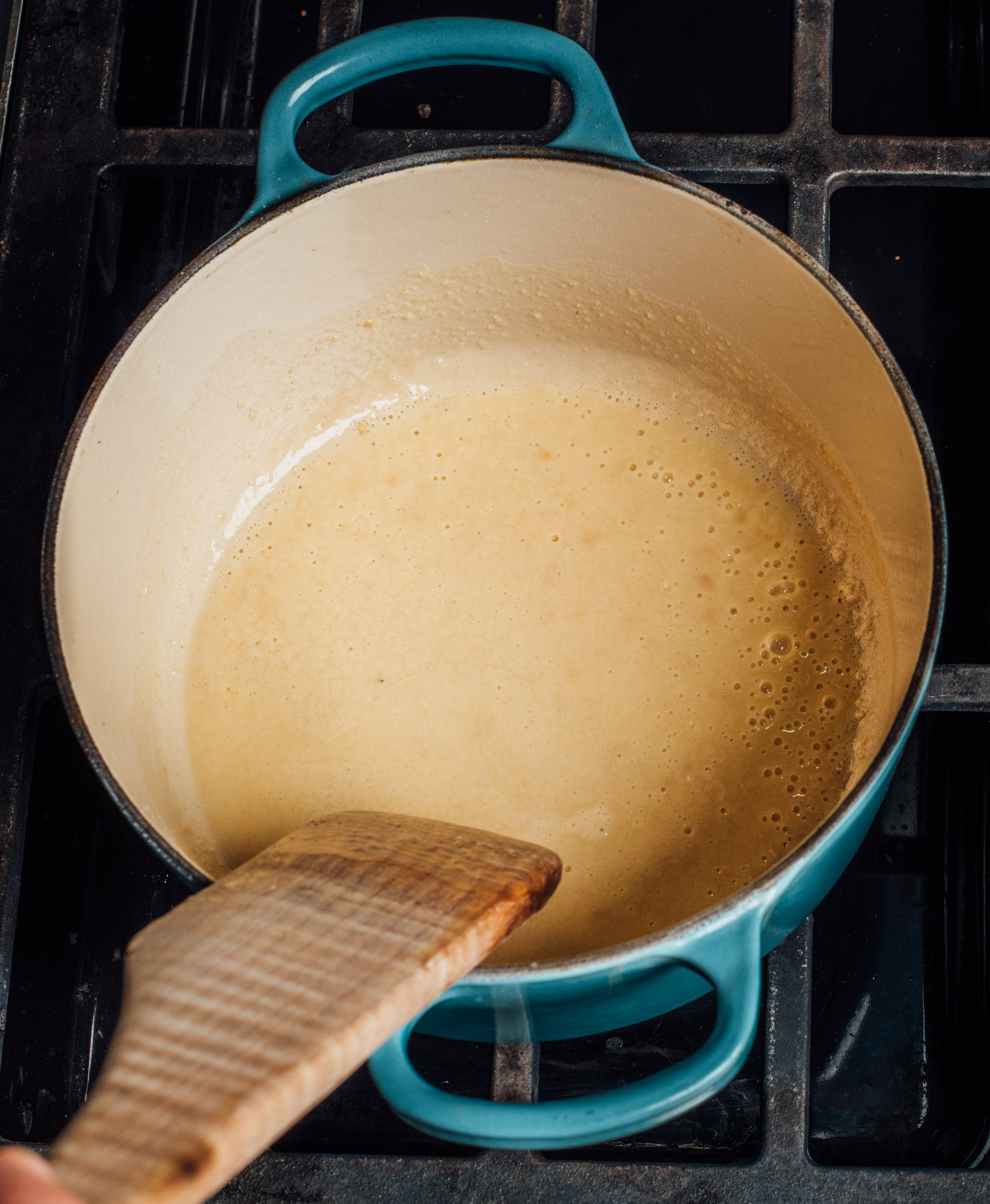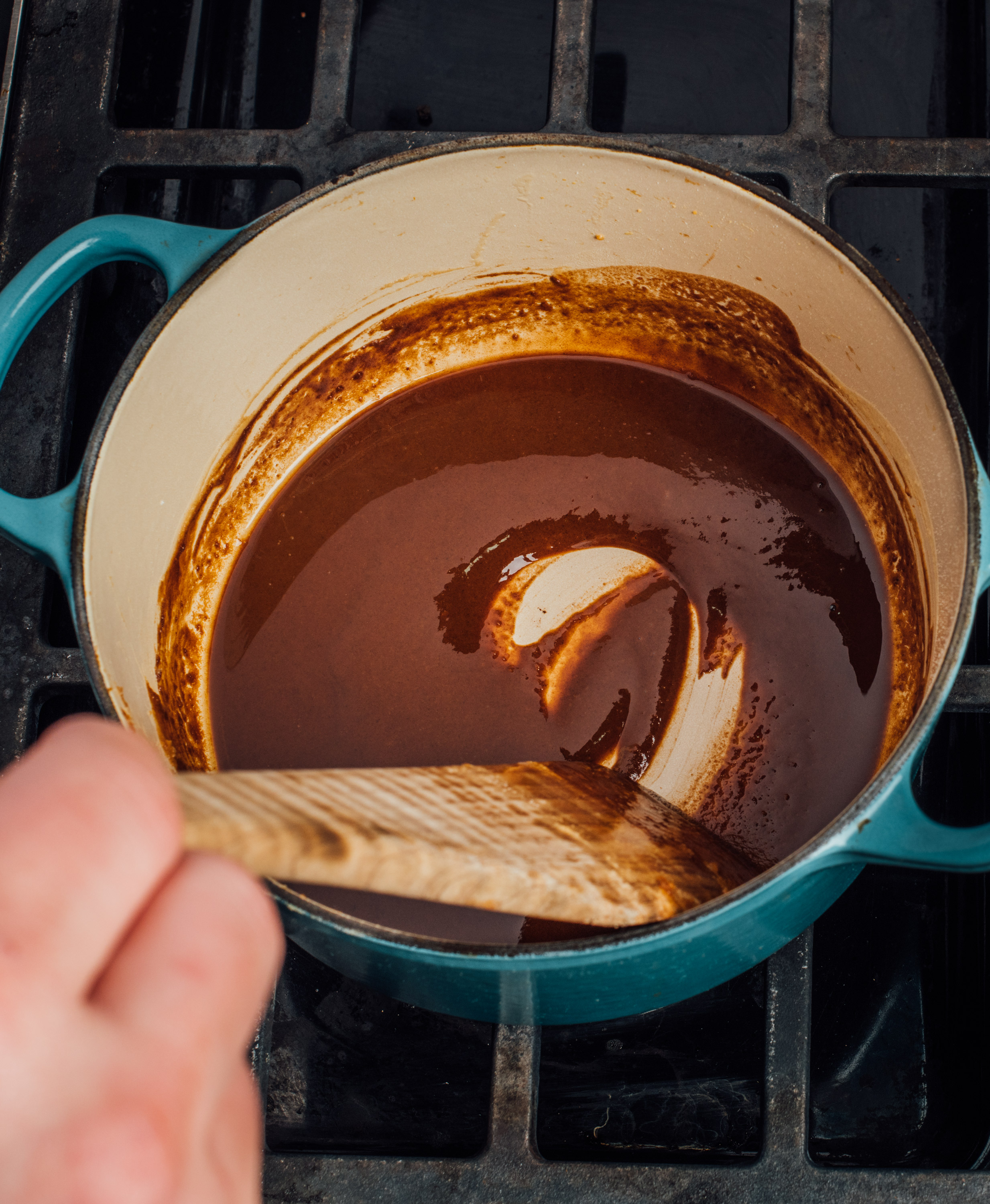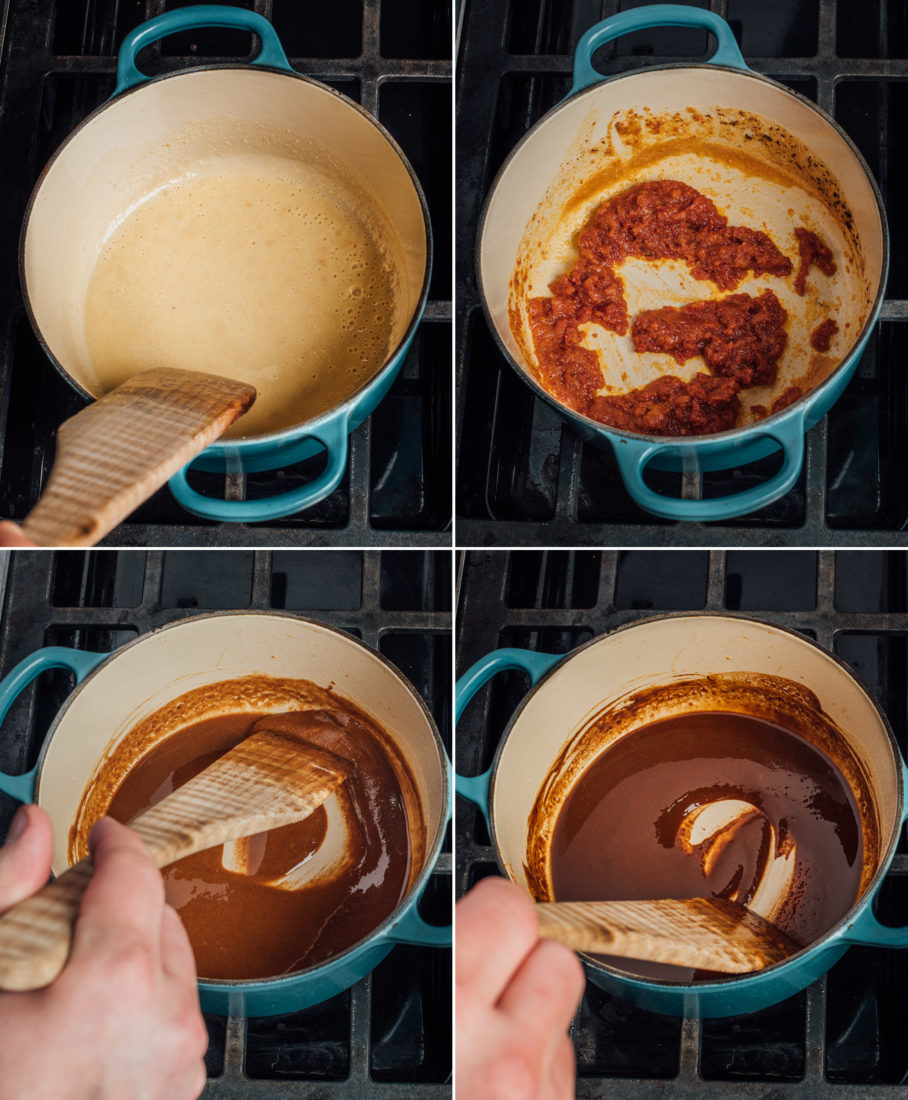
“Roux thickens sauces, adds depth to braises, and holds Cajun dishes together,” says chef Isaac Toups, owner of Toups’ Meatery and Toups’ South. “Half the recipes I know begin with ‘Make a roux.’ If you master only one thing in this book, make it roux. Roux almost always has a 1:1 ratio of fat to flour. Most of my recipes call for ¼ cup of each. You cook them together over medium heat, stirring almost constantly. You’ll want to use a thick-bottomed pot like a Dutch oven or a cast iron skillet because you need even heat. The biggest enemy of a roux (other than not paying attention to it) is a pan with a hot spot.”
“The darker a roux gets, the less power it has to thicken a sauce. I believe that’s from the denaturing of proteins in the flour as it cooks, but you’d have to ask Alton Brown about that,” says Toups.
“Before you start making a roux, make sure you’ve chopped your trinity and that it’s ready to go once your roux hits the right color.”
WHITE ROUX
White roux is just cold fat and cold flour. I don’t use it at all. Some old-school recipes call for it, but I always cook my roux. Otherwise, when the dish is done, you can still taste the raw flour—and that’s nasty. I’m only telling you what white roux is so I can tell you this: DO. NOT. MAKE. IT.
BLONDE ROUX
Makes 1/4 cup
This is white roux that’s been cooked for a couple minutes. Blonde roux is made with butter and becomes a base for a béchamel sauce, white gravy, cream sauce, or any cheese sauce. Use it basically anytime you’re trying to thicken dairy. When I make a roux with butter, I typically deviate slightly from the 1:1 fat to flour ratio because the butter loses a little weight when water cooks out of it. In general, it’s okay to have a little more fat than flour in a roux.
4 tablespoons unsalted butter
3 tablespoons all-purpose flour
› In a Dutch oven or heavy skillet set over medium heat, heat the butter until it melts and then stops bubbling. Watch carefully; you don’t want it to brown. Once the butter’s melted, you’ll see sediment collect at the bottom of the pan. Those are the milk solids, and some people scoop them out—but you should taste them. They’re delicious. Don’t throw them away.
› Once the butter stops bubbling, dump the flour in—no need to sprinkle it like it’s precious. Stir well to combine the butter and flour. Cook the roux a minute or two, stirring often, until it darkens by one shade and starts to smell nutty.

Courtesy of Chasing the Gator
BRICK ROUX
Makes 3/4 cup
Brick roux is blonde roux cooked with tomato paste. As soon as you have blonde roux, take the paste (or even tomato puree or tomatoes crushed by hand) and caramelize it with the roux.
I use brick roux mostly for couvillion, a rich seafood stew Maw Maw Toups always made. I also modify it for my Crawfish Bisque. Daddy’s gumbo uses V8 instead of tomato paste for a whole other twist—but he’s nuts.
4 tablespoons unsalted butter
3 tablespoons all-purpose flour
½ cup tomato paste
› In a Dutch oven or heavy skillet set over medium heat, make a blonde roux with the butter and flour. Once the roux is ready, add the tomato paste. Stir that in and let it caramelize until it starts sticking to the bottom. Cook it until it browns a little. I smash down the tomato paste evenly across the bottom of the pot to increase the surface area that is caramelized by the heat. This should take about 10 minutes total, and results in a brick red roux with a charred tomato flavor.
DARK or CARAMEL-COLORED ROUX
Makes 6 tablespoons
Dark roux is the stuff of Cajun legend. It’s the difference between gumbo and “…that’s a gumbo!” I like mine to be mahogany or rich milk chocolate in color.
You can use plain-Jane vegetable oil to make a roux (in fact, my daddy usually does), but I prefer grapeseed oil when I’m making dark roux because it’s got a higher smoke point. That means you can cook it hotter for longer without burning the oil. You can also use peanut oil or even refined avocado oil (which has the highest smoke point of any oil I’ve found). Do not use butter: It will burn and taste bitter, and ruin your dish.
If this is your first dark roux, turn down the heat and go low and slow. Settle in and know it’s going to take about 45 minutes of constant stirring to get there. Invest in a long-handled wooden spoon if you want to save your knuckles from the constant heat exposure. (Or don’t. It’s your hand.) I recommend a spatula-style wooden spoon with a flat edge so you can really scrape the bottom. Be diligent about scraping around the edges to make sure none of the roux burns.
Chop your trinity before you start making a dark roux, so you can add it immediately when the color’s right. The difference between great dark roux and burnt garbage is only a minute. If you burn even a little bit of it, you might as well throw it all out and start over. But don’t cry about it. There’s an old saying: “If you haven’t burned a roux, you’ve never made one.” You’ll know if it’s burned by the smell. No matter how dark a roux gets, if it’s still good it won’t smell acrid at all.

Courtesy of Chasing the Gator
Excerpted from CHASING THE GATOR Copyright © 2018 by Isaac Toups. Used with permission of Little, Brown and Company, New York. All rights reserved.








